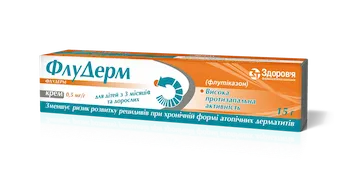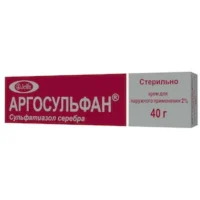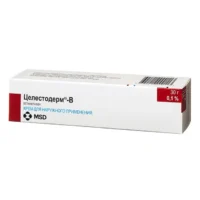Description
Fluderm (Fluticasone Propionate) Cream 0.5 mg/g – 15 g Tube
Ingredients
Fluderm cream contains fluticasone propionate as the active ingredient at a concentration of 0.5 mg/g. Other inactive ingredients may include emulsifying wax, propylene glycol, and purified water.
Mechanism of Action
Fluticasone propionate exerts its effects by inhibiting the release of inflammatory mediators and suppressing the immune response in the skin, thereby reducing redness, swelling, and itching.
Pharmacological Properties
Fluderm cream has potent anti-inflammatory and anti-pruritic properties, making it effective in managing corticosteroid-responsive dermatoses.
Indications for Use
Fluderm cream is indicated for the relief of inflammatory and pruritic manifestations of corticosteroid-responsive dermatoses such as eczema and psoriasis.
Contraindications
Fluderm cream is contraindicated in individuals with a history of hypersensitivity to any of the ingredients in the formulation. Avoid use on the face, underarms, or groin area without medical supervision.
Side Effects
Common side effects of Fluderm cream may include skin irritation, burning, or dryness at the application site. Prolonged use may lead to skin thinning or other dermatological changes.
Usage Instructions
For topical use only. Apply a thin layer of Fluderm cream to the affected area once daily. Consult a healthcare provider for the appropriate duration of treatment.
Benefits Compared to Analogues
Fluderm cream offers superior anti-inflammatory and anti-pruritic effects compared to other corticosteroid creams, providing effective relief for dermatological conditions.
Suitable Patient Groups
Fluderm cream is suitable for adults and children over a certain age as determined by a healthcare provider. Elderly patients may require adjustments in dosage based on individual skin conditions.
Storage and Shelf Life
Store Fluderm cream in a cool, dry place away from direct sunlight. Check the expiration date on the packaging and do not use the cream if expired.
Packaging Description
Fluderm cream is available in a 15 g tube for convenient topical application. The packaging is designed to maintain the stability and integrity of the cream.
Clinical Evidence and Proven Effectiveness
Studies have shown the efficacy of fluticasone propionate in reducing inflammation and itching associated with various dermatological conditions. Research published in the Journal of the American Academy of Dermatology demonstrated the superior anti-inflammatory properties of fluticasone propionate compared to other corticosteroids.
Clinical trials have demonstrated the safety and efficacy of Fluderm cream in the management of various dermatoses. A randomized controlled trial published in the Journal of Dermatological Treatment showed significant improvement in symptoms with the use of fluticasone propionate cream compared to placebo.





